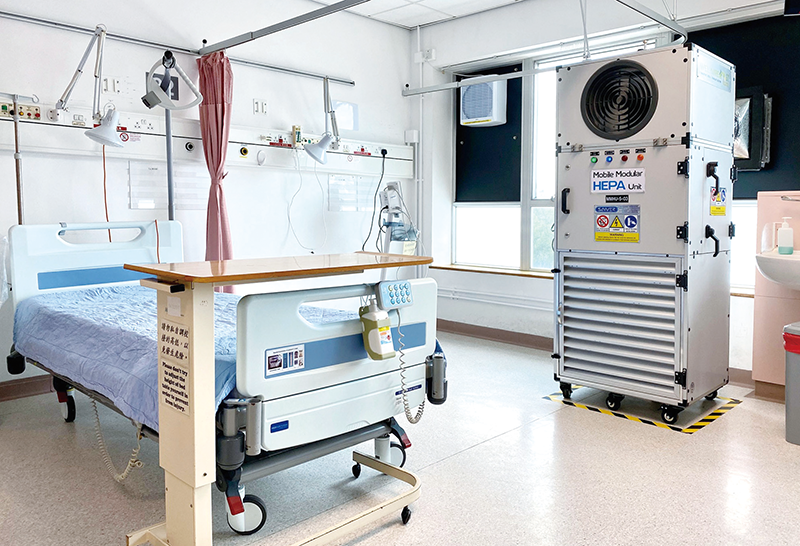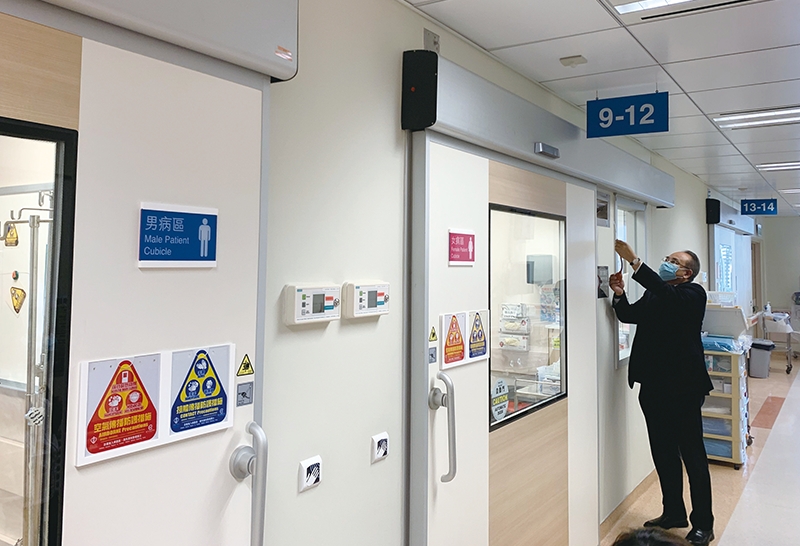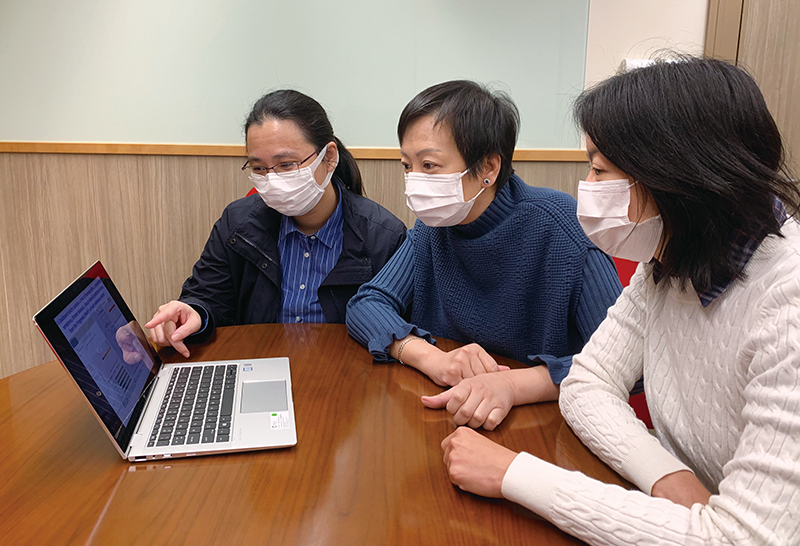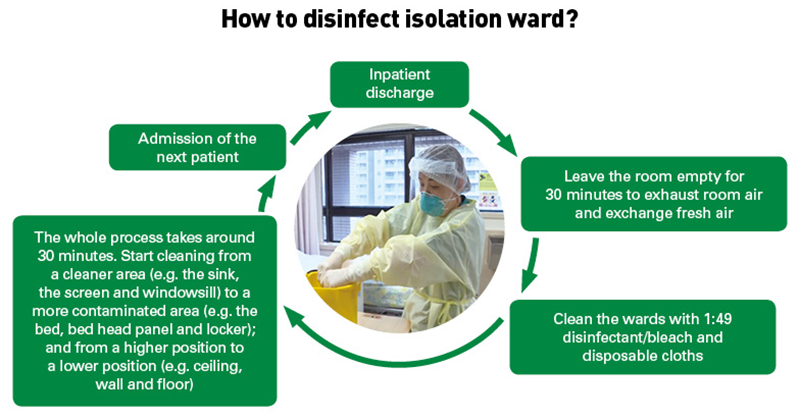Effective use of big data for ward makeover
In mid-March, a considerable number of Hong Kong residents flocked back from the overseas where COVID-19 was spreading rapidly. This wave of return led to a sudden increase in number of confirmed cases, creating a large demand for isolation wards at public hospitals. Second tier isolation wards retrofitted from general wards have then provided a timely relief in late March, retaining more first tier isolation beds to accommodate the newly confirmed cases. The key to such a transformation is associated with sophisticated big data analytics and exhaustive engineering preparation.
Back in early February, a mathematical model was adopted by Statistics & Data Science Department at Head Office to estimate the trend of infection. It was predicted that local infection might peak in late March or early April based on the basic reproduction number quoted from literature (estimated R0 = 2.3 or 2.68) and the assumption of no interventions over the entire projection horizon. Though the number of new confirmed cases remained below 10 per day in early February, HA Central Command Committee (CCC) considered the need for increasing the capacity of isolation facilities for different possibilities in case.
“The scientific study of ‘Fast-track ventilation strategy to cater for pandemic patient isolation surges’ conducted after the SARS outbreak has given an insight to break the stalemate,” states Yuen Pak-leung, Senior Manager (Engineering). He proposed the transformation of general ward into second tier isolation ward with negative pressure to CCC and discussed it with Task Force on Infection Control. The conversion of a ward took around two weeks and involved engineering works including the installation of ventilating fans and double doors at the entrance of the ward. However, the indispensable ‘HEPA filter Unit’, which creates a negative air pressure system, was out of stock. Therefore, the team decided to design it themselves and reached out to HA contractor for production. With concerns over the difficulty in mass production, the team and Electrical and Mechanical Services Department and its contractor joined hands to refine the design for easy maintenance and put it into mass production. The system was then swiftly delivered and installed at hospitals.
During the conversion, Yuen and his team have visited each of the wards, and adjusted the installation with reference to the actual circumstance and feedback from frontline staff. They also maintained effective communication with the frontline to assure them of the effectiveness and infection control standard of the second tier isolation ward.
Maths models to inspire pandemic strategy
In late March, local situation reached its peak with the biggest single-day jump of 65 new confirmed cases, triggering the need to put the second tier isolation wards into operation. But which kinds of patients are suitable to step down to the second tier isolation ward for continued clinical care? With different scenarios and data analysis and expert advice, Eva Tsui, Chief Manager (Statistics & Data Science) of Statistics & Data Science Department led her team to design a mathematical prognostic model to predict the prognosis of patients, by analysing clinical data such as onset date, symptoms, Ct value of PCR test, laboratory test results, age, gender and chronic disease history of patients. And the prediction model classifies patients into three outcome groups, namely ‘satisfactory’, ‘stable’, and ‘severe or critical’.
The analysis found that for most patients, their conditions in the first five days of hospital admission have a significant relationship with their prognosis in the following days. The model has facilitated clinical expert group and HA management to formulate proactive strategies and measures based on objective data to tackle the outbreak. Also, it has served as a reference tool to identify suitable patients for step-down care in second tier isolation wards in order to alleviate the demand pressure on the first tier isolation wards.
COVID-19 wreaks havoc across the world
Changes in the landscape of care
An uphill battle




